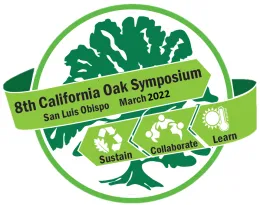#2

David Stahle, Department of Geosciences, University of Arkansas
Ian Howard, Department of Geosciences, University of Arkansas
Blue oak (Quercus douglasii) is a California endemic found in the foothills of the Coast Ranges and Sierra Nevada. Blue oak individuals over 500-years old have been documented with dendrochronology and tree-ring chronologies over 700-years long have been developed from old blue oak trees and long-dead remnant wood. Ring width chronologies of blue oak are very highly correlated with wet season precipitation totals, in some cases above r = 0.90, among the strongest precipitation signals yet detected in tree-ring data worldwide. Selected ring-width chronologies of blue oak in the drainage basin of the American River have been used to reconstruct winter precipitation, calibrating over 75% of the instrumental precipitation variance. Separate reconstructions of autumn precipitation have also been developed from earlywood-width chronologies of gray pine (P. sabiniana) and of spring precipitation from latewood-width chronologies of ponderosa pine (P. ponderosae). The co-occurrence of very wet spring conditions following an already wet winter increased after 1950 in both the instrumental and reconstructed data and coincided with many of the largest spring discharge events ever recorded on the American River at Folsom. The frequency of wet-on-wet winter and spring precipitation extremes in the last 70-years is unprecedented in the seasonal tree-ring reconstructions since 1750. The valuable precipitation records in the tree-ring chronologies of blue oak and associated conifers are relevant to flood risk and water supply in California and provide another argument for the conservation management of ancient blue oak woodlands.
